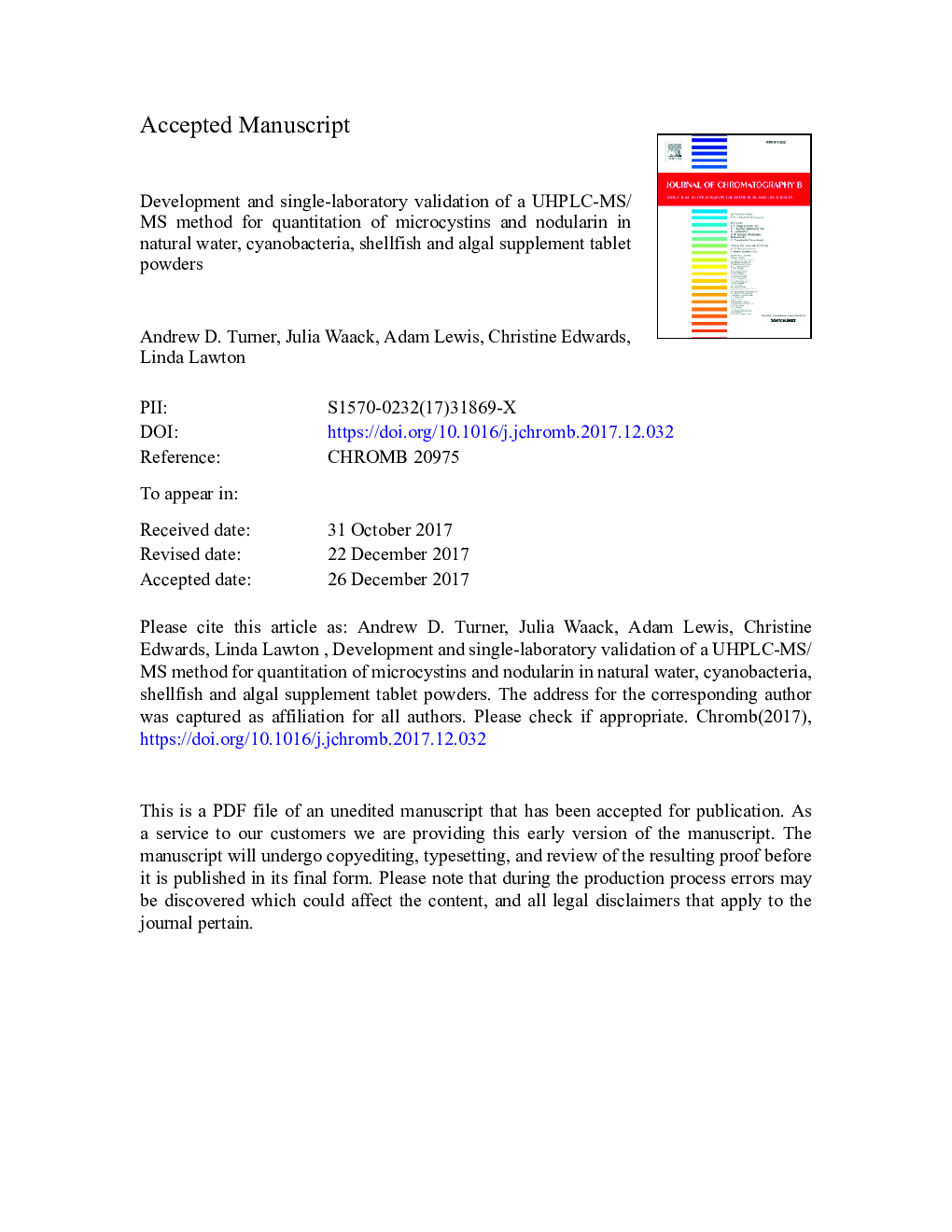| Article ID | Journal | Published Year | Pages | File Type |
|---|---|---|---|---|
| 7615461 | Journal of Chromatography B | 2018 | 53 Pages |
Abstract
A simple, rapid UHPLC-MS/MS method has been developed and optimised for the quantitation of microcystins and nodularin in wide variety of sample matrices. Microcystin analogues targeted were MC-LR, MC-RR, MC-LA, MC-LY, MC-LF, LC-LW, MC-YR, MC-WR, [Asp3] MC-LR, [Dha7] MC-LR, MC-HilR and MC-HtyR. Optimisation studies were conducted to develop a simple, quick and efficient extraction protocol without the need for complex pre-analysis concentration procedures, together with a rapid sub 5Â min chromatographic separation of toxins in shellfish and algal supplement tablet powders, as well as water and cyanobacterial bloom samples. Validation studies were undertaken on each matrix-analyte combination to the full method performance characteristics following international guidelines. The method was found to be specific and linear over the full calibration range. Method sensitivity in terms of limits of detection, quantitation and reporting were found to be significantly improved in comparison to LC-UV methods and applicable to the analysis of each of the four matrices. Overall, acceptable recoveries were determined for each of the matrices studied, with associated precision and within-laboratory reproducibility well within expected guidance limits. Results from the formalised ruggedness analysis of all available cyanotoxins, showed that the method was robust for all parameters investigated. The results presented here show that the optimised LC-MS/MS method for cyanotoxins is fit for the purpose of detection and quantitation of a range of microcystins and nodularin in shellfish, algal supplement tablet powder, water and cyanobacteria. The method provides a valuable early warning tool for the rapid, routine extraction and analysis of natural waters, cyanobacterial blooms, algal powders, food supplements and shellfish tissues, enabling monitoring labs to supplement traditional microscopy techniques and report toxicity results within a short timeframe of sample receipt. The new method, now accredited to ISO17025 standard, is simple, quick, applicable to multiple matrices and is highly suitable for use as a routine, high-throughout, fast turnaround regulatory monitoring tool.
Related Topics
Physical Sciences and Engineering
Chemistry
Analytical Chemistry
Authors
Andrew D. Turner, Julia Waack, Adam Lewis, Christine Edwards, Linda Lawton,
